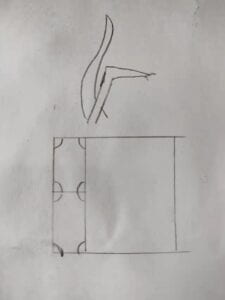Project description: a black and white visual representation of a piece of music of their choice using typographic symbols and characters. How can the musical elements within the song (tone, timbre, rhythm, speed, etc.) be interpreted into visual graphics? Additionally, music evokes emotions. How can your visual graphics convey emotion?
I chose June: Barcarole (The Seasons, op.37a, no.6) by Russian composer Tchaikovsky.
Sound track:
Appr
eciation:
The song is depicting the scene of a peaceful summer night. I can imagine rolling a boat on a glistening river under the moonshine. The sentences really make me feel like I am paddling, and the boat is swaying.
The characteristic of barcarole is that the same section of melody with repeat for two times. The overall atmosphere is slightly grieve with a sense of solitude. I think there are great thinking between the piece. Starting from 1:33, the tune gets more lively. It’s like suddenly have some inspiration. It reaches to the climax at 2:14 (asking a profound question). Afterwards , it goes down and go back to echo with the beginning ( get no answer, find solution impossible). The great theme may be concerning with death, the meaning of time, whatever, the feeling of the piece by no means should be limited to a plain surface, but many more dimensions.
Design elements:
I found a Russian font called moon that is often used in children’s storybooks, since it is a Russian piece, and the name fits the song. Also the characters are cute and have many elements that I can make use of.

I want create a picture of dreamland. I pieced four “r” together to form a swirl. indicating that it is in dream. Then I found that the loop by “s” is beautiful, so I rearrange and adjust them to get a tunnel.


Final work:

Reflection: I didn’t manage to quite get across what I feel about the piece through my presentation on class. Maybe I should rehearsal a little beforehand. Also about the documentation, it is better to record more processes and drafts on the blog, meanwhile I complete my design.





